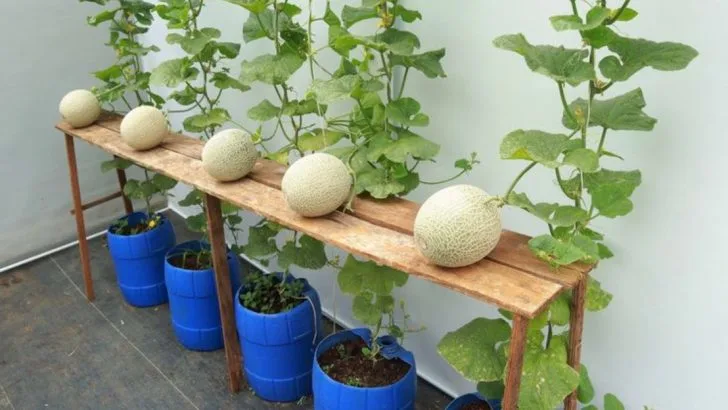Think cantaloupes are only for sprawling garden beds? Think again. With the right setup and a bit of know-how, you can grow sweet, juicy melons in containers — even on a patio or balcony. All it takes is a little planning and the right care.
In this article, we’ll share 12 clever tips to help you grow cantaloupe successfully in pots, from choosing the right varieties and container size to mastering pollination, support, and watering. With these techniques, you’ll enjoy delicious homegrown melons without needing a large plot of land.
Container-grown cantaloupe is possible — and incredibly rewarding — with just a few smart moves.
Choose the Right Container
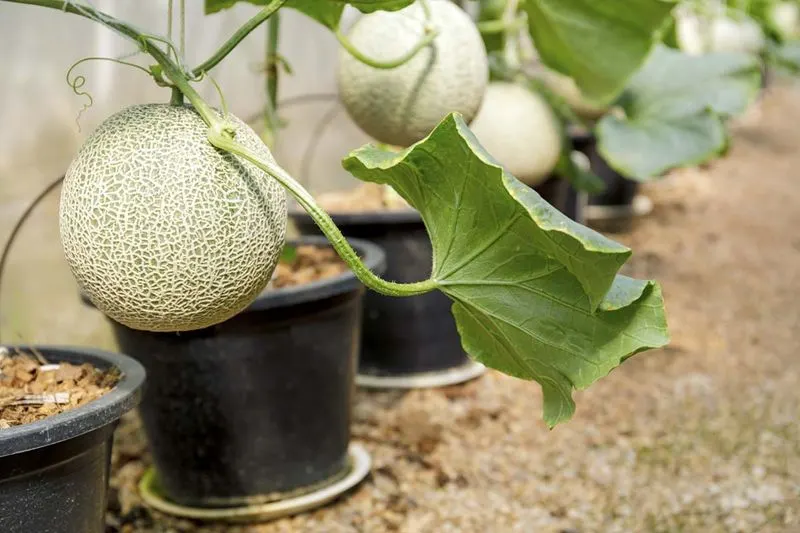
You can grow cantaloupes even if your garden is limited to a balcony. Start by selecting a container that is at least 18 inches deep and wide. Providing enough room for root development is crucial for healthy plant growth.
The container should have adequate drainage holes to prevent waterlogging, which could lead to root rot. Opt for materials like clay or fabric pots that allow air to circulate.
A sturdy container also helps anchor the plant, supporting its weight as it grows, especially when the fruits start to develop. It’s a small but significant step towards a fruitful harvest.
Select the Best Soil Mix
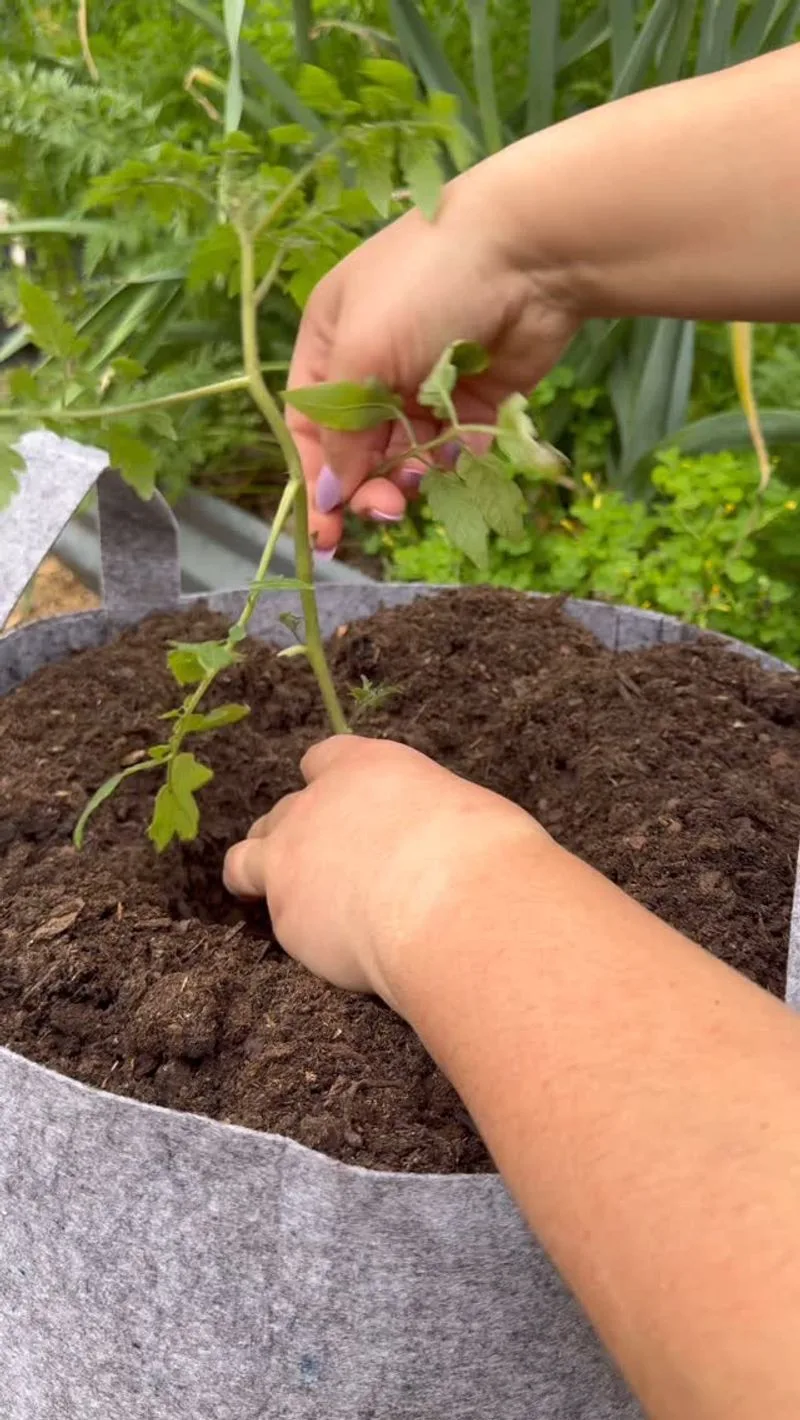
Soil quality can dictate the success of your cantaloupe harvest. For the best results, use a mix that is rich in compost and organic matter.
A well-draining potting mix is ideal, as it prevents water from accumulating at the roots. Incorporating perlite or sand can enhance drainage, ensuring roots stay healthy.
Don’t forget to check the pH level of the soil—it should be slightly acidic to neutral, around 6.0 to 6.5. This balance provides optimal nutrient availability, promoting vigorous growth and flavorful melons.
Ensure Proper Sunlight
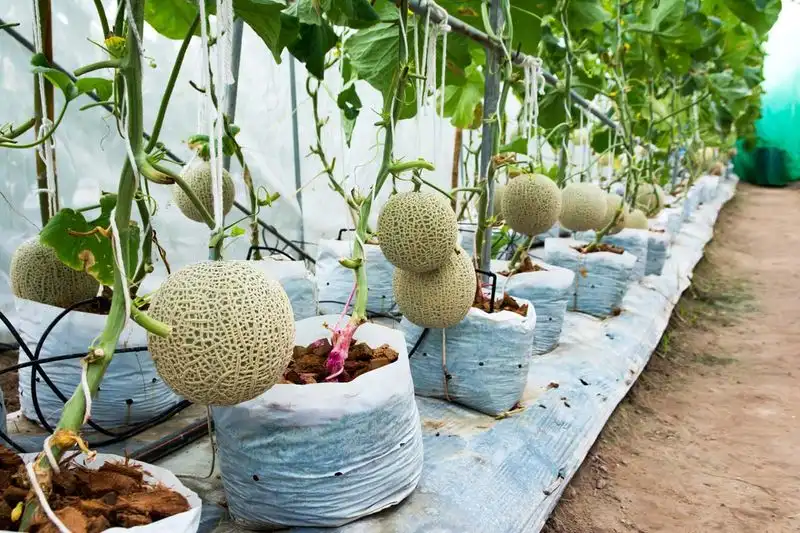
Sunlight is a non-negotiable ingredient in the recipe for sweet cantaloupes. Aim to provide your plants with at least six to eight hours of direct sunlight each day.
Position your containers in the sunniest spot available. If natural light is limited, consider using grow lights to supplement.
The right lighting not only fuels photosynthesis but also plays a role in developing the sugar content in the fruit. Bright, sunny conditions lead to sweeter, more delicious melons.
Master the Art of Watering
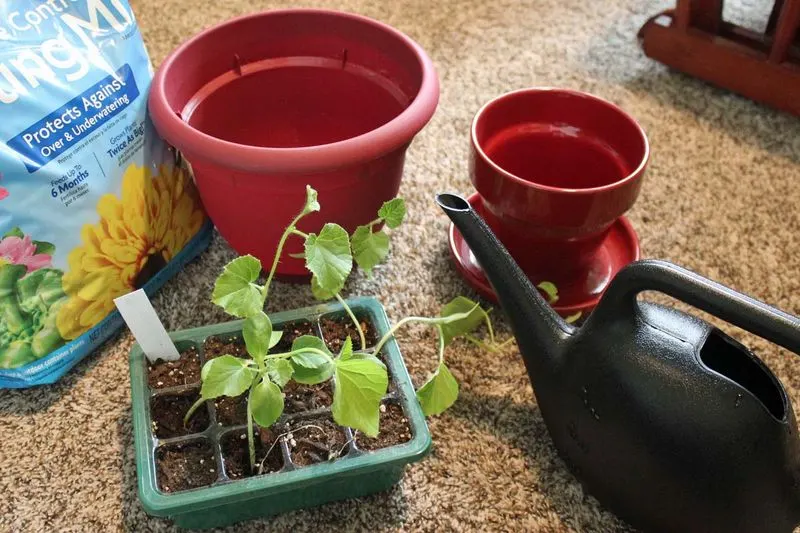
Consistent moisture is key to growing cantaloupes in containers successfully. The soil should remain evenly moist but not soggy.
Water deeply to encourage deep root growth, ensuring the entire root system receives nourishment. Reduce watering frequency as fruits approach harvest to concentrate sugars.
Overwatering can be as damaging as underwatering, so monitor the soil moisture levels closely. Drip irrigation systems can make this task easier, delivering water directly to the roots without wetting the foliage.
Fertilize Wisely
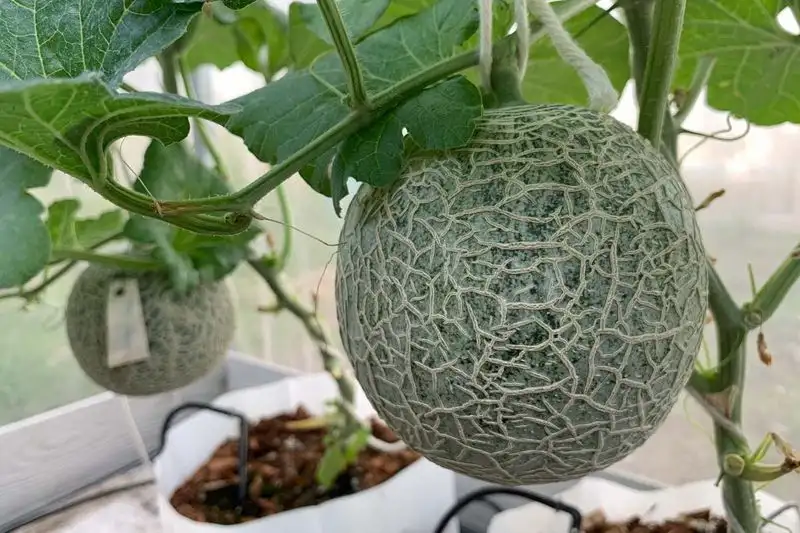
Fertilizing is essential for lush growth and fruit production. Choose a balanced, slow-release fertilizer to provide a steady supply of nutrients.
Apply the fertilizer according to the package instructions, typically every four to six weeks during the growing season.
Avoid over-fertilizing, which can lead to lush foliage at the expense of fruit development. Organic options like fish emulsion or compost tea can boost the nutrient content naturally, promoting healthy, sweet cantaloupes.
Support Your Plants
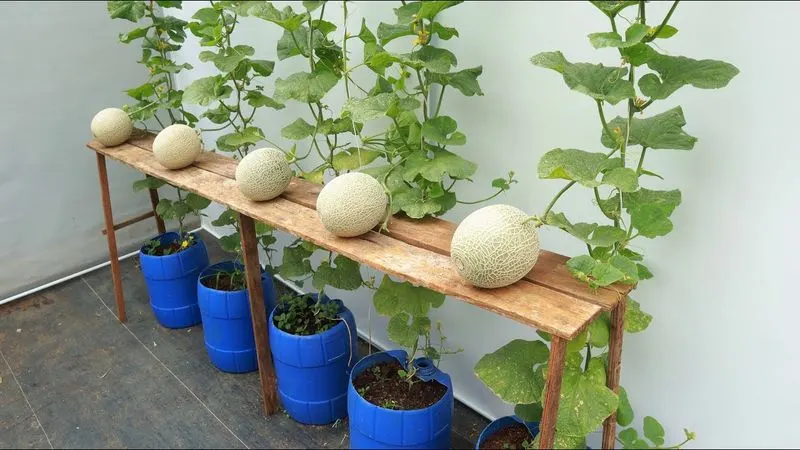
As cantaloupe plants grow, they need support to keep their vines and developing fruits off the ground.
Using a trellis or a cage can prevent the fruit from touching the soil, reducing the risk of rot and pest issues.
This setup also promotes better air circulation around the plant, minimizing disease risks. Secure the vines gently to the support structure with soft ties to avoid damaging the plant as it grows.
Prune for Productivity
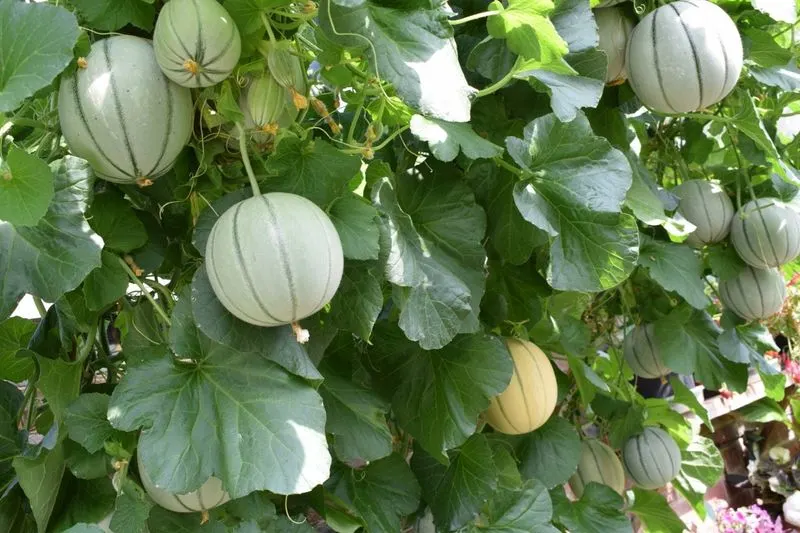
Pruning cantaloupes can enhance fruit quality and ripening. Focus on removing excess vines and leaves to direct energy towards fruit production.
Pinch off the growing tips after a few melons have set to encourage the plant to concentrate on fruit ripening.
Less cluttered plants allow sunlight to reach all parts, improving overall growth and fruit sweetness. It also facilitates air circulation, reducing the chances of fungal diseases.
Monitor for Pests
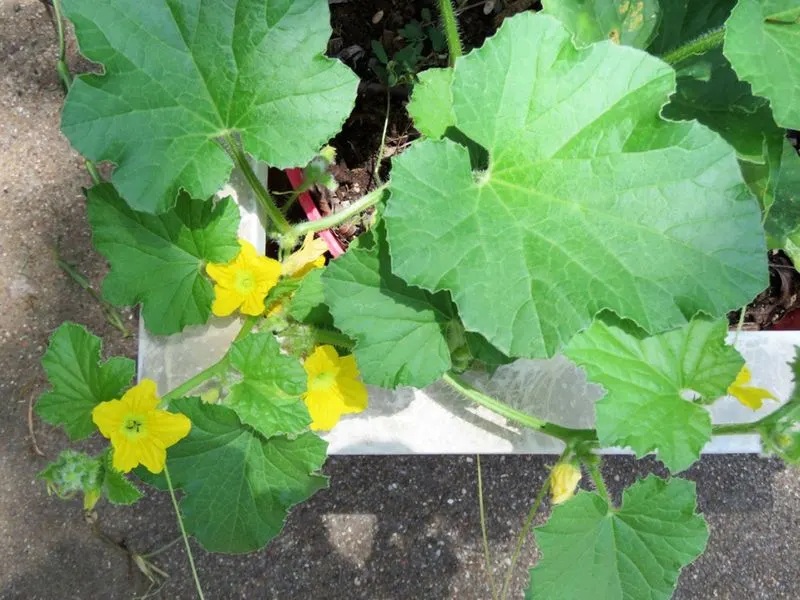
Pests can be a menace to cantaloupes. Keep an eye out for common invaders such as aphids and cucumber beetles.
Regularly inspect your plants for signs of damage or infestation. Handpick large insects or use organic insecticidal soap for smaller pests.
Encouraging beneficial insects like ladybugs and lacewings can keep pest populations in check. Healthy plants are less susceptible to pest damage, so maintain vigorous growth through proper care.
Pollination Matters
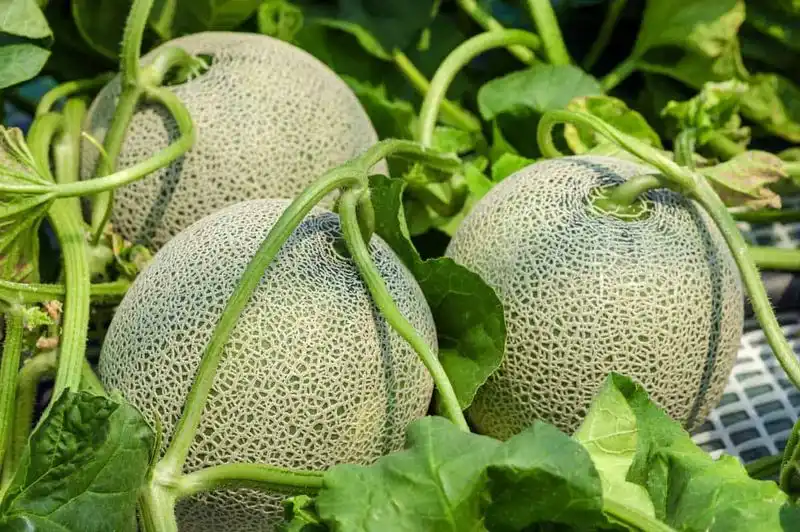
Cantaloupes rely on pollinators for fruit set. If you’re growing them in a container garden, attracting bees and other pollinators is crucial.
Place flowering plants nearby to draw in pollinators, or consider hand-pollinating by transferring pollen from male to female flowers using a small brush.
Without adequate pollination, fruit development may be compromised. Ensuring a thriving pollinator presence can lead to a more abundant and successful harvest.
Protect from Extreme Weather

Weather extremes can affect cantaloupe growing success. Shield your plants from high winds or heavy rain, which can damage vines and flowers.
Move containers to a sheltered location if severe weather is forecast. Consider using row covers or temporary shelters for added protection.
Containers make it easier to adapt to sudden weather changes, ensuring your plants remain safe and continue to thrive despite the elements.
Harvest at the Right Time
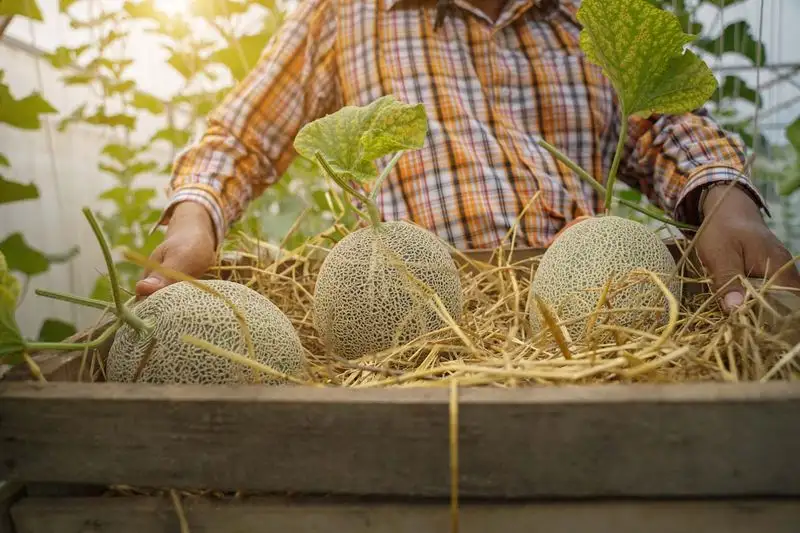
Knowing when to harvest cantaloupes is vital for maximizing flavor. Look for indicators such as a sweet aroma and a slight change in skin color.
The stem should easily detach with a gentle tug, signaling ripeness. Overripe fruits may crack, while underripe ones lack sweetness.
Proper timing ensures the best taste and juiciness. Keep track of maturation periods to pick your melons at their peak, offering a perfect, refreshing treat.
Rotate Crops Annually
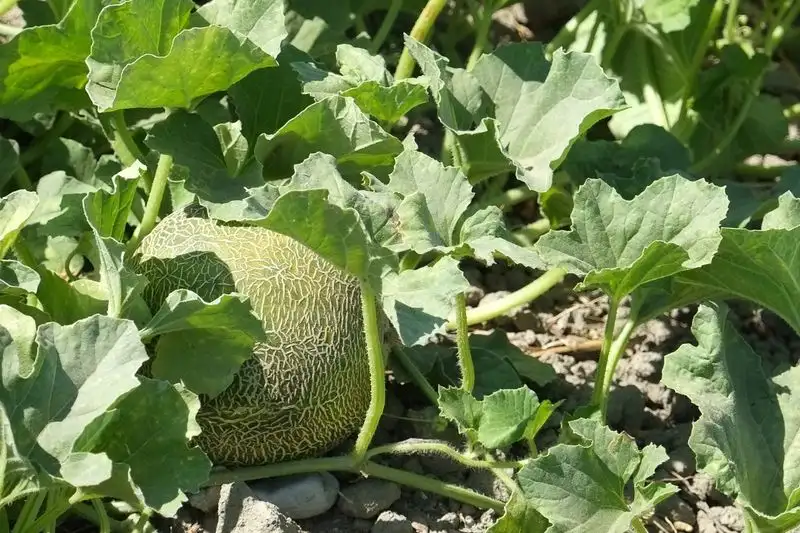
Rotating crops helps prevent soil-borne diseases and nutrient depletion. Avoid planting cantaloupes in the same container soil year after year.
Switch with other plants such as beans or peas to restore soil fertility naturally, as they fix nitrogen in the soil.
This practice not only maintains soil health but also keeps pest populations in check, ensuring a robust growing environment for future cantaloupe plants.

